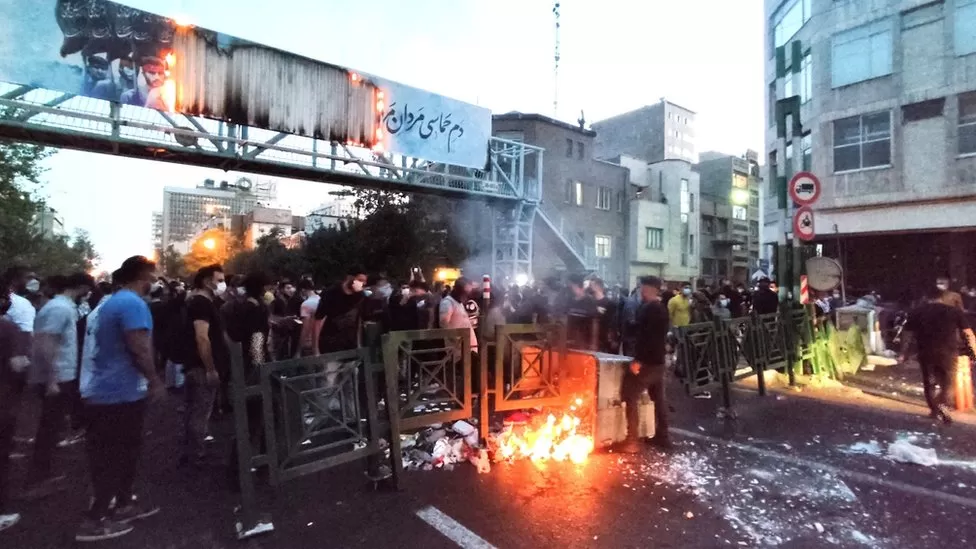NI: Iran riots were not sustainable, government acted strategically
The National Interest publishes a report that outlines three main reasons why the riots in Iran failed to create effective change.
-

Rioters light a fire in the days following the death of Mahsa Amini, in Tehran, Iran, September 21, 2022 (Reuters).
A report published by the National Interest outlined the causes behind the failure of the Iran riots in creating real and lasting 'change', let alone threatening Iran's legitimacy.
Ozcelik made three main arguments as to why the riots were unable to create effective change; two were related to rioters and the people, while the third was related to how the Iranian government responded to the escalation.
Rioters and the people
Primarily, the report required "buy-in from the security apparatus of the state to be successful." That being said, the writer noted, that for this to happen, the number of rioters would have to be large enough to inspire security members to desert their positions as defenders of the state and join the rioters in their cause.
However, in Iran, the rioters did not exceed the thousands while the country has a population of approximately 80 million. And as such, the number of rioters remained too small to "threaten the regime’s survival."
Read more: Iranian intel. dismantles Mossad teams, acquires data on ringleader
The second reason denoted in the report is that "successful social movements require support from a vast range of the population, ideally from both sides of the aisle, through sustained waves of protests."
This, according to the professor of International Affairs at Harrisburg University, Mehdi Noorbaksh, was non-existent in the context of the Iran riots. Noorbaksh argued that there was a "failure to translate them into a broad social movement that included all segments of the population."
The Iranian Government
According to NI's report, the "primary drivers of social change" have historically remained "those who put their lives at risk," despite popular delusion.
The claims that in the 2009 Iran protests social media was able to "influence massive protests", the report argued, were vastly "exaggerated".
The report also argued that Iran used "a calibrated set of tools and tactics to diminish the potency of the protests and re-establish control over the streets and squares of the country." This meant that the government did not use lethal force in its response to the riots but rather was "strategic" in achieving its objective.
The report then explained, that instead of being drawn to the streets using force to contain the riots, the Iranian government rather used developed technology to obtain records of violations and track perpetrators. It even cited an expert, on condition of anonymity, who claimed that "protesters are not immediately arrested and may instead face prosecution later based on police analysis of visual recordings."
In so doing, the government diminished direct confrontations between rioters and security forces, thus deterring people from joining rioters. Furthermore, the report noted another deterrent which is Iran's courts and legal process.
Read more: Terrorist admits to killing 2 security officers in Iran

 3 Min Read
3 Min Read








